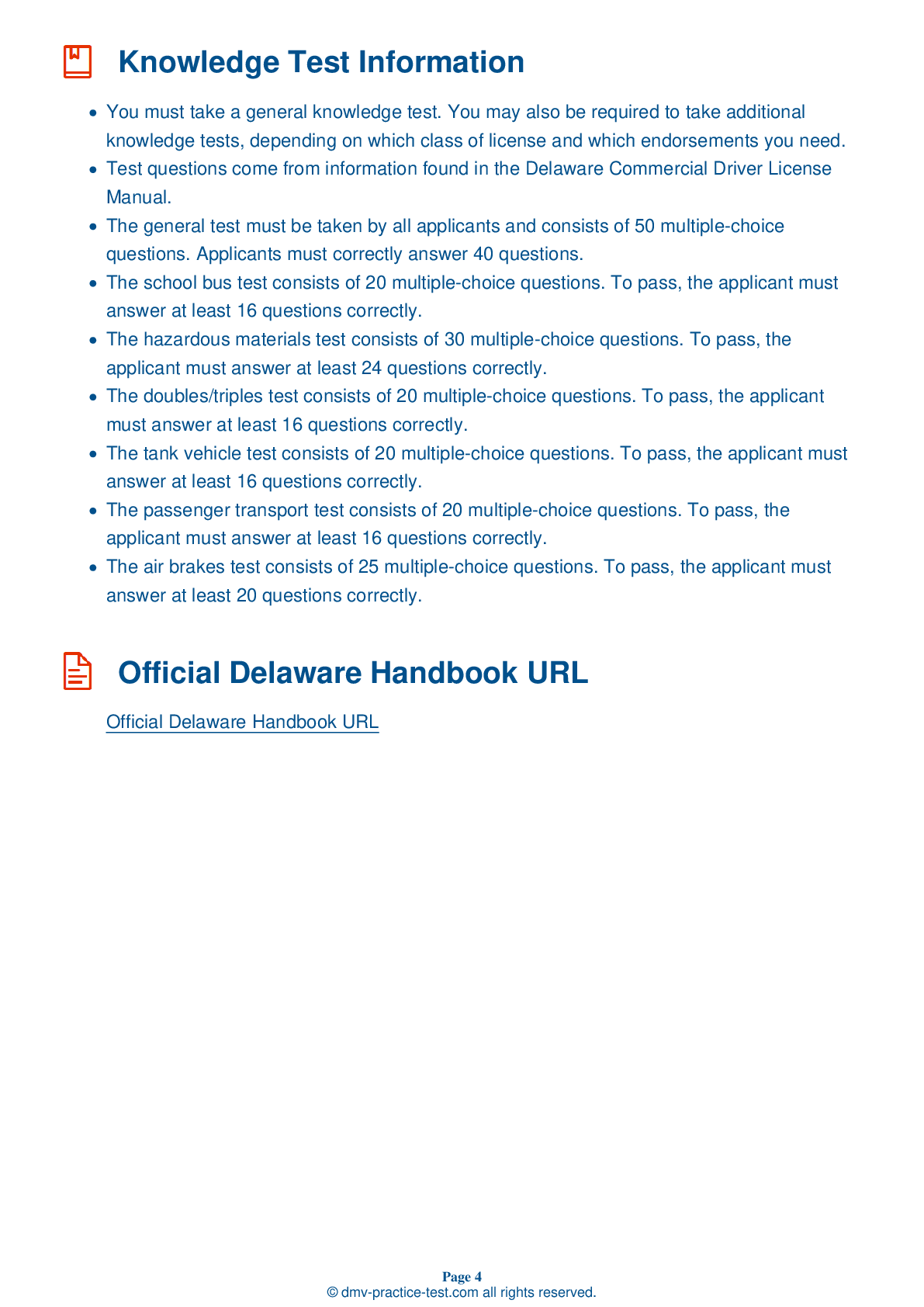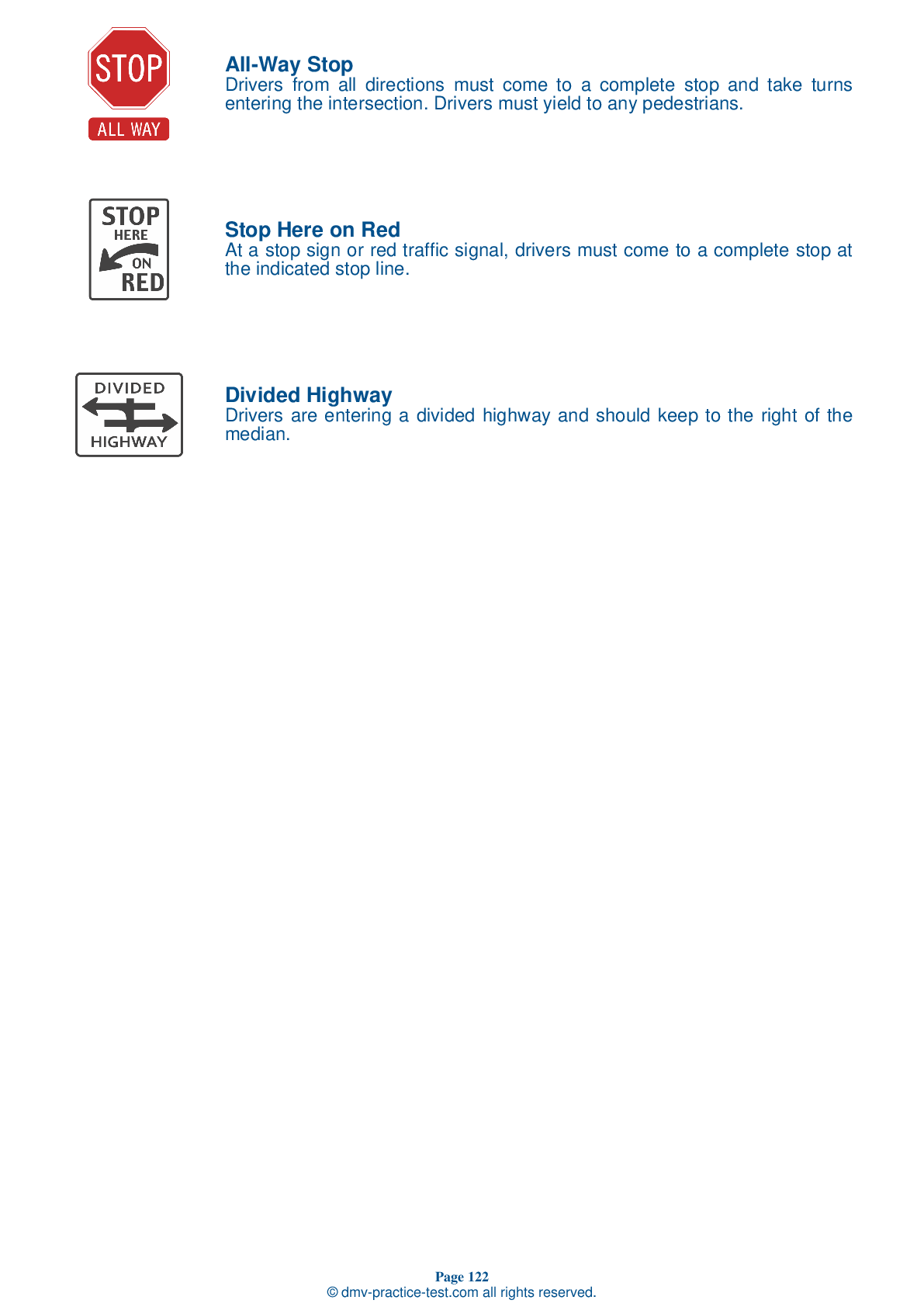Air Brakes Endorsement Test | Delaware 2026 #2 Page 3 of 4
Train for FREE online with our Delaware CDL air brake test. The official exam test consists of several obligatory parts, with all of them checking your knowledge of different blocks of road rules. If you need to obtain a DE Class A/Class B driver license in 2026, practice as much as possible. Free sample tests published on our website will help you check and improve your knowledge and boost your grades. Please bear in mind that the requirements for CDL may vary from state to state.
13 . The rods in S-cam brakes move the slack adjusters when air pressure is added to the brake chambers. This air pressure is added to the chambers when the driver:
When pressing the brake pedal in a vehicle with S-cam brakes, air will enter the brake chambers. The added air pressure will push out the rods and move slack adjusters, twisting the brake camshafts.
14 . When the brake pedal is pushed down, air brakes work:
Because air takes time to flow through the air lines to the brakes, air brakes cannot begin working instantly. There is often a brake lag of at least one-half of a second between the moment the brake pedal is pressed and the moment the brakes begin to work.
15 . The service brake system:
Air brakes consists of three separate braking systems: the service brake system, the parking brake system, and the emergency brake system. The service brake system applies and releases the brakes when you use the brake pedal while driving normally.
16 . Most heavy-duty vehicles use:
Most heavy-duty vehicles use dual air brake systems, in which there are two separate braking systems operated by a single set of controls. Each system operates the brakes on different axles.
17 . When you need to stop in an emergency, you should:
If you need to make an emergency stop, you can use either the controlled braking method or the stab braking method. It's important to brake in a way that keeps your vehicle traveling in a straight line while still allowing you to turn, if necessary.
18 . The brake pedal is part of which braking system?
The service brake system applies and releases the brakes when a driver presses the brake pedal while driving normally.
See the exact questions that will be on the 2026 Delaware DMV exam.
99.2% of people who use the cheat sheet pass the FIRST TIME
Lillian MCcranie explains how our CDL study guide was helpful in passing the exam and recommends it to everyone.
Cameron tells us how he purchased the CDL exam, and found it to be a useful tool which helped him pass the exam and find a job.



